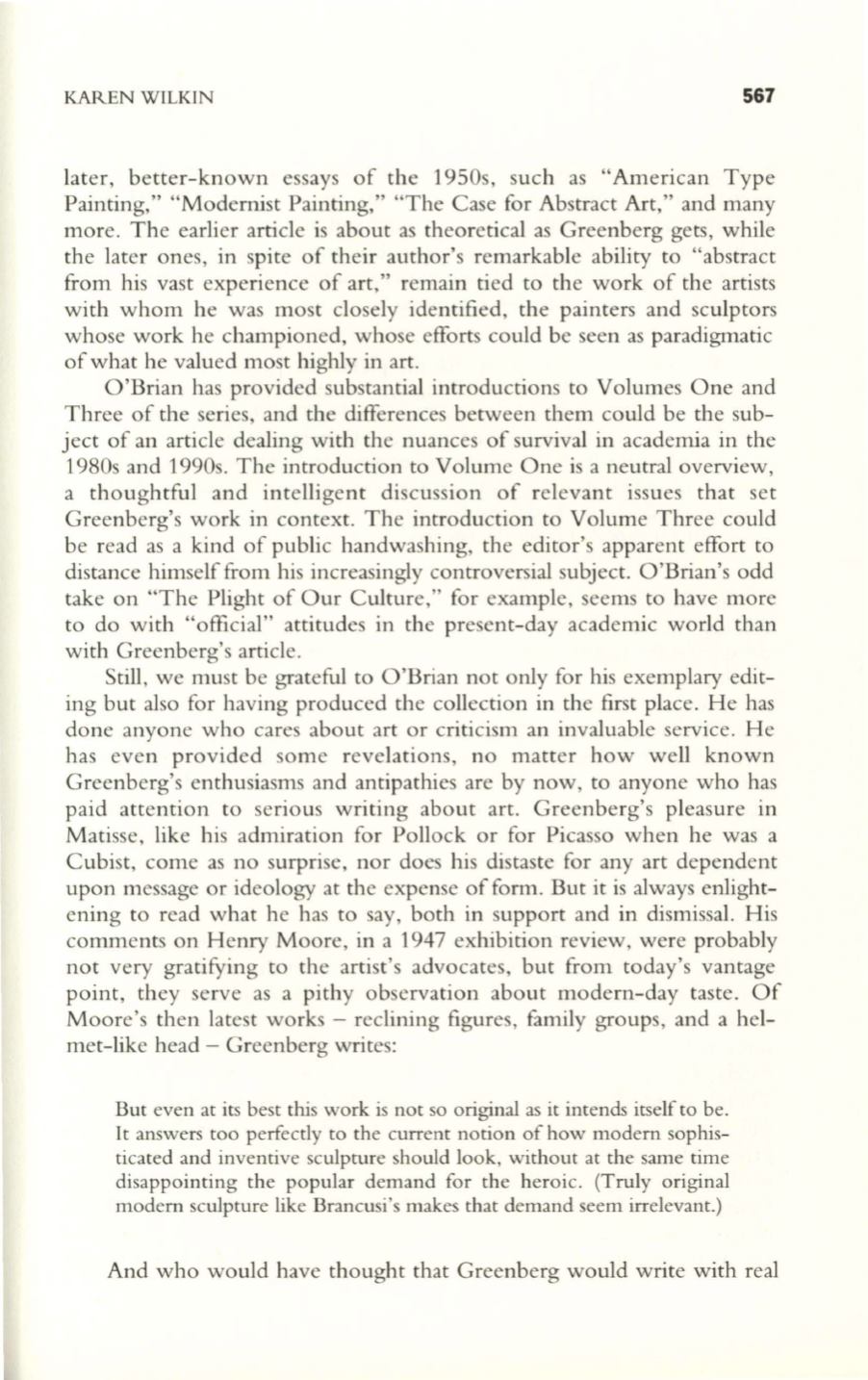
KAREN WILKIN
567
later, better-known essays of the 1950s, such as "American Type
Painting," "Modernist Painting," "The Case for Abstract Art," and many
more. The earlier article is about as theoretical as Greenberg gets, while
the later ones, in spite of their author's remarkable ability to "abstract
from his vast experience of art," remain tied to the work of the artists
with whom he was most closely identified, the painters and sculptors
whose work he championed, whose efforts could be seen as paradigmatic
of what he valued most highly in art.
O'Brian has provided substantial introductions to Volumes One and
Three of the series, and the differences between them could be the sub–
ject of an article dealing with the nuances of survival in academia in the
1980s and 1990s. The introduction
to
Volume One is a neutral overview,
a thoughtful and intelligent discussion of relevant issues that set
Greenberg's work in context. The introduction to Volume Three could
be read as a kind of public handwashing, the editor's apparent effort to
distance himself from his increasingly controversial subject. O'Brian's odd
take on "The Plight of Our Culture," for example, seems to have more
to do with "official" attitudes in the present-day academic world than
with Greenberg's article.
Still, we must be grateful to O'Brian not only for his exemplary edit–
ing but also for having produced the collection in the first place. He has
done anyone who cares about art or criticism an invaluable service. He
has even provided some revelations, no matter how well known
Greenberg's enthusiasms and antipathies are by now, to anyone who has
paid attention
to
serious writing about art. Greenberg's pleasure in
Matisse, like his admiration for Pollock or for Picasso when he was a
Cubist, come as no surprise, nor does his distaste for any art dependent
upon message or ideology at the expense of form. But it is always enlight–
ening to read what he has to say, both in support and in dismissal. His
comments on Henry Moore, in a 1947 exhibition review, were probably
not very gratifying to the artist's advocates, but from today's vantage
point, they serve as a pithy observation about modern-day taste. Of
Moore's then latest works - reclining figures, family groups, and a hel–
met-like head - Greenberg writes:
But even at its best this work is not so original as it intends itself to be.
It answers too perfectly to the current notion of how modern sophis–
ticated and inventive sculpture should look, without at the same time
disappointing the popular demand for the heroic. (Truly original
modern sculpture like Brancusi's makes that demand seem irrelevant.)
And who would have thought that Greenberg would write with real


